The assurance that DE is a “natural” product lulls users into a false sense of safety about its regular use in chickens’ environment, but arsenic and mercury are natural too- natural does not mean safe for every purpose. The presence of DE in the environment is a health hazard to humans and chickens.

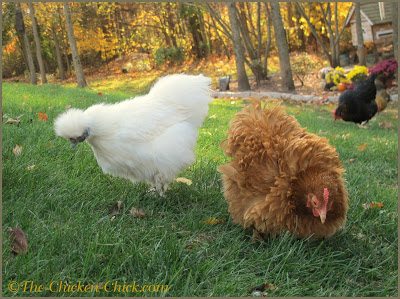
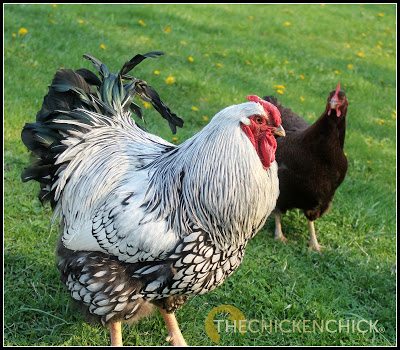
RESPIRATORY HAZARD
Silicon dioxide, the drying element in DE, exists primarily in the amorphous form, but also contains the more dangerous, crystalline form. The Material Data Safety Sheets written by manufacturers of food grade DE caution users to avoid creating dust, avoid inhaling dust, use local exhaust ventilation, wear coveralls, use respirators and wear safety goggles. The use of DE in the coop or dust bath ensures its constant presence in the air.
DE is a respiratory hazard to chickens- it is known to create scar tissue on the lungs that impairs respiration. While chickens may live a decade or less, breathing crystalline silica regularly is known to cause cancer and chronic pulmonary disease in humans, so even if chicken DE weren’t a health hazard to chickens, the daily danger of airborne, respirable DE particles in the extremely dusty atmosphere of a chicken yard every day ought to scare the tar out of users. Yes, it’s natural, yes it’s organic, yes it’s cancer-causing when inhaled in sufficient amounts over time.
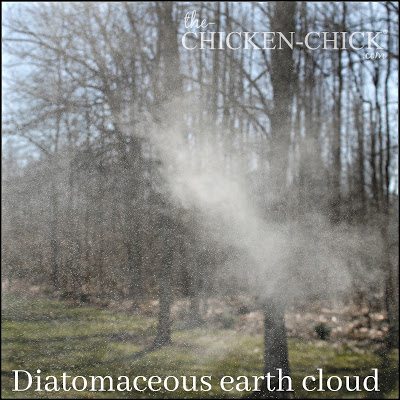
IMMUNE SYSTEM SUPPRESSANT
While we typically think of the immune system as working inside the body, skin is the largest organ of the chicken’s immune system and its first line of defense against pathogens and disease. Skin’s functions are to act as a barrier against pathogens and other potentially harmful substances, retain vital fluids and gases, and alerts chickens to the proximity of potential threats with its network of highly sensitive nerve endings. Another aspect of the immune system is the mucous membranes in the mouth, vent, eyes and ears that possess populations of beneficial microflora charged with defending ports of access into the chicken’s body from invasion by pathogens. DE dries these moist membranes, disrupting the beneficial populations of microflora, rendering the bird vulnerable to pathogens and disease. Yet another detrimental drying effect of DE on the immune system is robbing chickens of the natural oils they preen onto their feathers to maintain good condition and provide effective insulation in cold weather.
If the insecticide action of DE is to cut into insects’ hard exoskeletons and dry them to death, DE is most assuredly lacerating and drying out your chicken’s immune system!
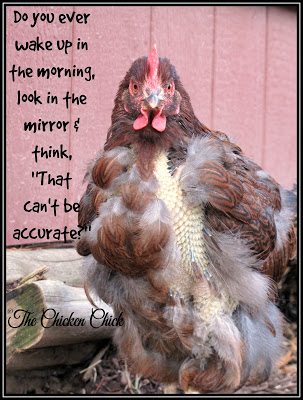
WHY DO SOME CHICKEN KEEPERS USE DE?
I think many backyard chicken keepers believe they should use DE because someone recommended it to them without understanding its dangers. A look at commonly articulated reasons for using DE with chickens reveals several things: it’s unnecessary, it’s unsafe, and it’s ineffective for the purported uses.
The primary purported benefits of food grade DE by chicken hobbyists are as a drying agent in coop litter, an insecticide and a de-wormer, but food grade DE is not approved in the US for any of those uses with chickens. DE is only approved for use as a pelleting aid, anti-caking agent and flow agent in livestock feed not to exceed 2% of the total diet. In other words, it helps pellets stick together and prevents wet feed ingredients from sticking to storage containers and machinery.1
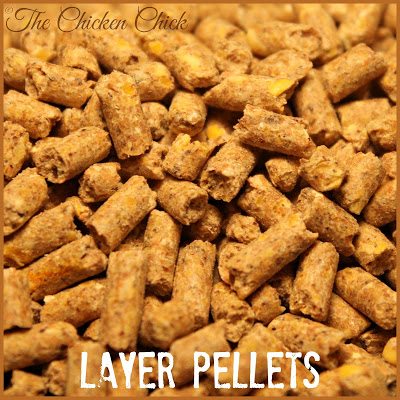
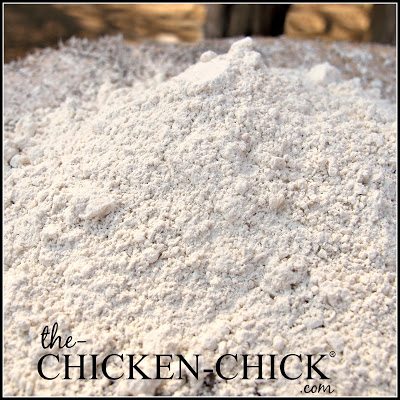
Purported Use #1: Absorb Moisture & Neutralize Ammonia
While densely populated commercial poultry houses are expected to have difficulty controlling moisture and ammonia fumes in the litter, backyard chicken keepers should not. There is no excuse for a backyard chicken coop to be so wet or so dirty that it smells like ammonia. If your chicken coop smells like ammonia, the coop should be cleaned, ventilation improved, and an alternate litter type used that will keep the coop dry. DE does not neutralize ammonia.
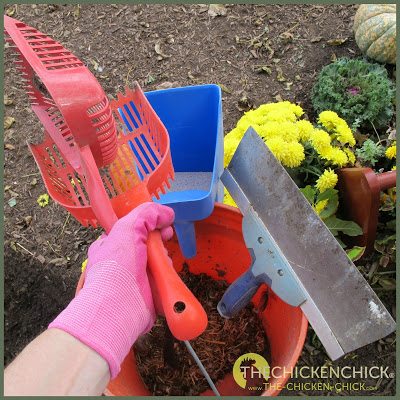
Purported Use #2: Insecticide
We would never fathom taking antibiotics daily as a preventative due to fear of one day contracting a bacterial infection; similarly, chickens should not be subjected to any insecticide daily as a preventative measure due to the fear of lice or mites. It is unnatural and unnecessary to seek to eradicate every insect in the chicken yard, all day, every day with diatomaceous earth.
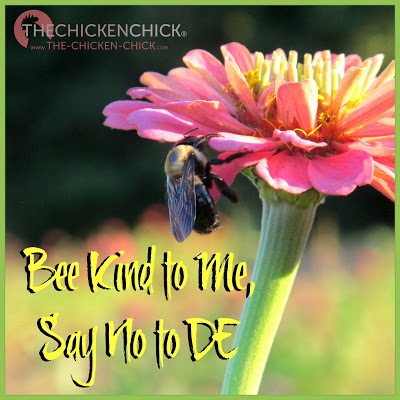
Diatomaceous earth kills indiscriminately. The ability of beneficial bacteria to flourish in a deep litter system and in compost depends upon on a balanced ecosystem of bacteria and insect activity; efforts to kill all the bad bugs also kill the desirable good ones. One manufacturer’s advisory warns: “Avoid dusting flowers and other areas where bees and beneficial insects may land, as diatomaceous earth has the potential to negatively impact most insects that come in contact with it.”2 If it ever becomes necessary to use an insecticide, there are other much more effective, natural insecticides available that do not endanger health of chickens, humans or beneficial insects as diatomaceous earth does.
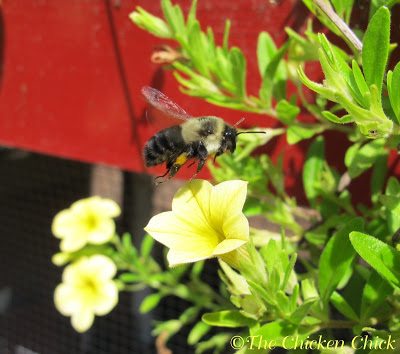
Purported Use #3: De-wormer
Because DE is an absorbent, when placed in a wet environment such as the digestive tract, it becomes ineffective. DE particles cannot dehydrate and kill worms or intestinal parasites in the gut if the particles are already full of water in the same way a sponge saturated with water cannot absorb more water. Further, the sharp edges have the capacity to inflict microscopic lacerations in the bird’s mouth, esophagus and crop- at least until they become fully saturated by bodily fluids.
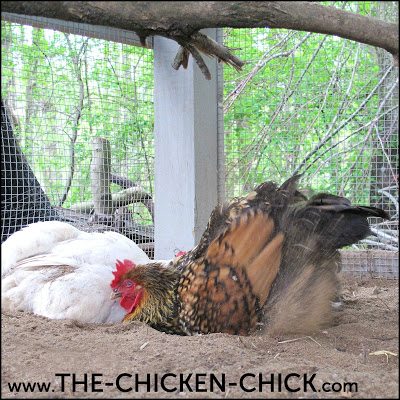
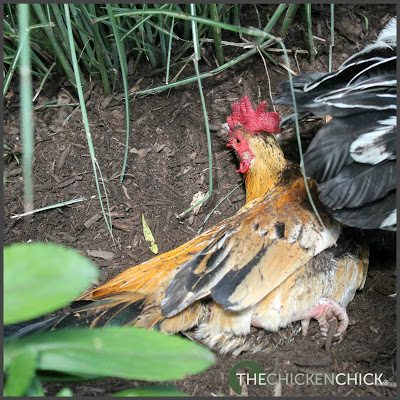
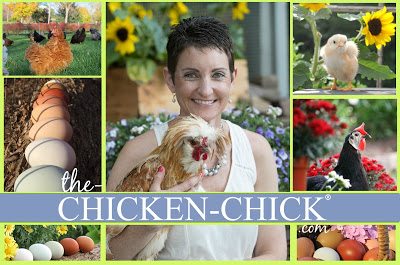
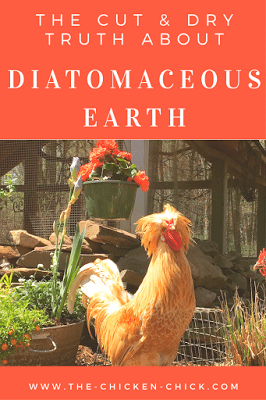
Sources and further reading:
Diatomaceous earth, Is it an Is it an effective dewormer for sheep and goats? A review of the scientific literature
http://cru.cahe.wsu.edu/CEPublications/eb1784e/eb1784e.pdf
http://rodaleinstitute.org/2012/turning-compost-by-temperature/
http://extension.unh.edu/resources/files/resource000811_rep844.pdf
Storey’s Guide to Raising Chickens, Damerow, Gail. Storey Publishing, 1995.
Raising Chickens Naturally: Diatomaceous Earth is No Friend of Nature, by herbalist Susan Burek
The Dirt on Diatomaceous Earth
OSHA Guidelines Amorphous Silica
http://www.atsjournals.org/doi/pdf/10.1164/ajrccm.158.3.9709103
Diatomite Mining and Processing
http://edis.ifas.ufl.edu/ig140
Herbal Pest Management, Susan Burek, Herbalist BackyardPoultry Magazine June/July 2011
A Personal Perspective on using DE, Herbalist Susan Burek
The Dirt on Diatomaceous Earth, Shagbark Farms
The Chicken, A Natural History, Barber, Joseph. Race Point Publishing (2012)
Mites of Poultry, The Merck Veterinary Manual
Diseases of Poultry, 13th Edition, Saif, Y.M.
External & Internal Parasites of Poultry, Eva Wallner-Pendleton, DVM, MS, ACPV
Pesticides Used for Control of Poultry Insect Pests
Technical Summary for Elector PSP
http://sandcollectors.org/what-is-sand/
http://colbydigssoil.com/2012/07/09/sizing-up-soil-structure/
http://www.planetnatural.com/diatomaceous-earth-bees/
http://ps.oxfordjournals.org/content/90/7/1416.full.pdf+html?sid=1208b50b-9c38-4c31-aba1-752b37d31c1f
http://www.mnwelldir.org/docs/misc/silica.htm
http://www.ncbi.nlm.nih.gov/pmc/articles/PMC3059459/
npic.orst.edu
http://www.mtsylviadiatomite.com.au/
Thermophilic bacteria, Compositing Stages, and The Sanitization of Compost
Poultry Farming
DE does not have an effect on parasites loads as measured by fecal egg counts in sheep and goats.
Images of DE cutting into insects
Diatomite Mining and Processing
Quarles, W. 1992. Diatomaceous earth for pest control. The IPM practitioner. Monitoring Field Pest Manage. 14:1–11. Quisenberry, J. H. 1967.
Eshleman, J. C. 1966. Poultry feed containing about 1% diatomaceous earth. US Pat. No. 3,271,161.
Pollinating Birds, Mammals Falling Victim to Extinction
What will Happen if the Bees Disappear?
DE is Unsafe to use around essential pollinators such as honey bees
DE is Highly Toxic to Bees
http://www.science.org.ge/3-1/Bernard.pdf
Korunic, Z. 1998. Diatomaceous earths, a group of natural insecticides. J. Stored Prod. Res. 34:87–97. Kouba, M. 2003.
1 http://www.absorbentproductsltd.com/diatomaceous-earth-anti-caking-agent-and-flow-aid.html
http://compost.css.cornell.edu/microorg.html
http://web.extension.illinois.edu/homecompost/science.cfm

Kathy Shea Mormino
Affectionately known internationally as The Chicken Chick®, Kathy Shea Mormino shares a fun-loving, informative style to raising backyard chickens. …Read on
shop my SPONSORS
The assurance that DE is a “natural” product lulls users into a false sense of safety about its regular use in chickens’ environment, but arsenic and mercury are natural too- natural does not mean safe for every purpose. The presence of DE in the environment is a health hazard to humans and chickens.



RESPIRATORY HAZARD
Silicon dioxide, the drying element in DE, exists primarily in the amorphous form, but also contains the more dangerous, crystalline form. The Material Data Safety Sheets written by manufacturers of food grade DE caution users to avoid creating dust, avoid inhaling dust, use local exhaust ventilation, wear coveralls, use respirators and wear safety goggles. The use of DE in the coop or dust bath ensures its constant presence in the air.
DE is a respiratory hazard to chickens- it is known to create scar tissue on the lungs that impairs respiration. While chickens may live a decade or less, breathing crystalline silica regularly is known to cause cancer and chronic pulmonary disease in humans, so even if chicken DE weren’t a health hazard to chickens, the daily danger of airborne, respirable DE particles in the extremely dusty atmosphere of a chicken yard every day ought to scare the tar out of users. Yes, it’s natural, yes it’s organic, yes it’s cancer-causing when inhaled in sufficient amounts over time.

IMMUNE SYSTEM SUPPRESSANT
While we typically think of the immune system as working inside the body, skin is the largest organ of the chicken’s immune system and its first line of defense against pathogens and disease. Skin’s functions are to act as a barrier against pathogens and other potentially harmful substances, retain vital fluids and gases, and alerts chickens to the proximity of potential threats with its network of highly sensitive nerve endings. Another aspect of the immune system is the mucous membranes in the mouth, vent, eyes and ears that possess populations of beneficial microflora charged with defending ports of access into the chicken’s body from invasion by pathogens. DE dries these moist membranes, disrupting the beneficial populations of microflora, rendering the bird vulnerable to pathogens and disease. Yet another detrimental drying effect of DE on the immune system is robbing chickens of the natural oils they preen onto their feathers to maintain good condition and provide effective insulation in cold weather.
If the insecticide action of DE is to cut into insects’ hard exoskeletons and dry them to death, DE is most assuredly lacerating and drying out your chicken’s immune system!

WHY DO SOME CHICKEN KEEPERS USE DE?
I think many backyard chicken keepers believe they should use DE because someone recommended it to them without understanding its dangers. A look at commonly articulated reasons for using DE with chickens reveals several things: it’s unnecessary, it’s unsafe, and it’s ineffective for the purported uses.
The primary purported benefits of food grade DE by chicken hobbyists are as a drying agent in coop litter, an insecticide and a de-wormer, but food grade DE is not approved in the US for any of those uses with chickens. DE is only approved for use as a pelleting aid, anti-caking agent and flow agent in livestock feed not to exceed 2% of the total diet. In other words, it helps pellets stick together and prevents wet feed ingredients from sticking to storage containers and machinery.1


Purported Use #1: Absorb Moisture & Neutralize Ammonia
While densely populated commercial poultry houses are expected to have difficulty controlling moisture and ammonia fumes in the litter, backyard chicken keepers should not. There is no excuse for a backyard chicken coop to be so wet or so dirty that it smells like ammonia. If your chicken coop smells like ammonia, the coop should be cleaned, ventilation improved, and an alternate litter type used that will keep the coop dry. DE does not neutralize ammonia.

Purported Use #2: Insecticide
We would never fathom taking antibiotics daily as a preventative due to fear of one day contracting a bacterial infection; similarly, chickens should not be subjected to any insecticide daily as a preventative measure due to the fear of lice or mites. It is unnatural and unnecessary to seek to eradicate every insect in the chicken yard, all day, every day with diatomaceous earth.

Diatomaceous earth kills indiscriminately. The ability of beneficial bacteria to flourish in a deep litter system and in compost depends upon on a balanced ecosystem of bacteria and insect activity; efforts to kill all the bad bugs also kill the desirable good ones. One manufacturer’s advisory warns: “Avoid dusting flowers and other areas where bees and beneficial insects may land, as diatomaceous earth has the potential to negatively impact most insects that come in contact with it.”2 If it ever becomes necessary to use an insecticide, there are other much more effective, natural insecticides available that do not endanger health of chickens, humans or beneficial insects as diatomaceous earth does.

Purported Use #3: De-wormer
Because DE is an absorbent, when placed in a wet environment such as the digestive tract, it becomes ineffective. DE particles cannot dehydrate and kill worms or intestinal parasites in the gut if the particles are already full of water in the same way a sponge saturated with water cannot absorb more water. Further, the sharp edges have the capacity to inflict microscopic lacerations in the bird’s mouth, esophagus and crop- at least until they become fully saturated by bodily fluids.




Sources and further reading:
Diatomaceous earth, Is it an Is it an effective dewormer for sheep and goats? A review of the scientific literature
http://cru.cahe.wsu.edu/CEPublications/eb1784e/eb1784e.pdf
http://rodaleinstitute.org/2012/turning-compost-by-temperature/
http://extension.unh.edu/resources/files/resource000811_rep844.pdf
Storey’s Guide to Raising Chickens, Damerow, Gail. Storey Publishing, 1995.
Raising Chickens Naturally: Diatomaceous Earth is No Friend of Nature, by herbalist Susan Burek
The Dirt on Diatomaceous Earth
OSHA Guidelines Amorphous Silica
http://www.atsjournals.org/doi/pdf/10.1164/ajrccm.158.3.9709103
Diatomite Mining and Processing
http://edis.ifas.ufl.edu/ig140
Herbal Pest Management, Susan Burek, Herbalist BackyardPoultry Magazine June/July 2011
A Personal Perspective on using DE, Herbalist Susan Burek
The Dirt on Diatomaceous Earth, Shagbark Farms
The Chicken, A Natural History, Barber, Joseph. Race Point Publishing (2012)
Mites of Poultry, The Merck Veterinary Manual
Diseases of Poultry, 13th Edition, Saif, Y.M.
External & Internal Parasites of Poultry, Eva Wallner-Pendleton, DVM, MS, ACPV
Pesticides Used for Control of Poultry Insect Pests
Technical Summary for Elector PSP
http://sandcollectors.org/what-is-sand/
http://colbydigssoil.com/2012/07/09/sizing-up-soil-structure/
http://www.planetnatural.com/diatomaceous-earth-bees/
http://ps.oxfordjournals.org/content/90/7/1416.full.pdf+html?sid=1208b50b-9c38-4c31-aba1-752b37d31c1f
http://www.mnwelldir.org/docs/misc/silica.htm
http://www.ncbi.nlm.nih.gov/pmc/articles/PMC3059459/
npic.orst.edu
http://www.mtsylviadiatomite.com.au/
Thermophilic bacteria, Compositing Stages, and The Sanitization of Compost
Poultry Farming
DE does not have an effect on parasites loads as measured by fecal egg counts in sheep and goats.
Images of DE cutting into insects
Diatomite Mining and Processing
Quarles, W. 1992. Diatomaceous earth for pest control. The IPM practitioner. Monitoring Field Pest Manage. 14:1–11. Quisenberry, J. H. 1967.
Eshleman, J. C. 1966. Poultry feed containing about 1% diatomaceous earth. US Pat. No. 3,271,161.
Pollinating Birds, Mammals Falling Victim to Extinction
What will Happen if the Bees Disappear?
DE is Unsafe to use around essential pollinators such as honey bees
DE is Highly Toxic to Bees
http://www.science.org.ge/3-1/Bernard.pdf
Korunic, Z. 1998. Diatomaceous earths, a group of natural insecticides. J. Stored Prod. Res. 34:87–97. Kouba, M. 2003.
1 http://www.absorbentproductsltd.com/diatomaceous-earth-anti-caking-agent-and-flow-aid.html
http://compost.css.cornell.edu/microorg.html
http://web.extension.illinois.edu/homecompost/science.cfm

Related Posts
How to Reform a Bully Chicken
Subscribe
Login
466 Comments
Inline Feedbacks
View all comments
Sara
3 months ago
What would you suggest to keep mites and lice at bay then?
Reply
Kathy, The Chicken Chick®
Author
Reply to Sara
3 months ago
It is completely unnecessary to “keep mites and lice at bay.” Chickens live outdoors with other wildlife that transport all kinds of things, including lice and mites. Only rarely will a flock be infested with external parasites. Treat the flock ONLY IF/WHEN there is an infestation.
The responsible management practice is NOT to keep insecticides in the birds’ environment 24/7/365, the best practice is to ROUTINELY INSPECT the birds for mites and lice. OBSERVATION. That’s it! Once or twice a month.
I explain how to do that simply, quickly and what to look for during an inspection here: https://the-chicken-chick.com/poultry-lice-and-mites-identification/
Reply
Jane
4 years ago
Hi, I am I new to keeping chickens. Very much enjoying reading all the information you have on your website. We are considering the Deep Litter Method for our coop. We live in South Texas. Is there an alternative to DE that we should use?
Reply
Kathy, The Chicken Chick®
Author
Reply to Jane
4 years ago
I do not recommend using the deep litter system of waste management in Texas and definitely not with a small flock of backyard chickens. They don’t generate enough waste to heat up the litter as required. You will have a hideous, stinky mess inside your coop and flies galore. Try sand for litter and you will be able to keep the coop clean and dry quite easily. https://the-chicken-chick.com/chicken-coop-bedding-sand-litter/
Use droppings boards underneath your roosts and cleaning up after your birds will be a breeze. https://the-chicken-chick.com/droppings-boards-because-poop-happens/
Reply
Tina Gray
4 years ago
I can’t thank you enough for this well researched and written article. As a veterinarian I have been battling this misinformation for years. As well as chickens I have clients who use it on their cats and dogs. Maybe a second opinion will convince them . I will direct them to your article from now on.
Reply
Kathy, The Chicken Chick®
Author
Reply to Tina Gray
4 years ago
I appreciate that, Dr. Gray. Thank you for stopping by my website!
Reply
« Previous1…909192
















